The world of interior design is constantly evolving, with new trends emerging and old ones resurfacing in innovative ways. One style that has seen a resurgence in recent years is retro-futurism, a design concept that combines the optimism and aesthetics of the past’s vision of the future with modern design principles. This fusion creates spaces that feel nostalgic yet forward-thinking, offering a unique blend of past and present. In this article, we will explore how retro-futurism is influencing modern design in 2025 and how you can incorporate this eclectic style into your home.
1. What is Retro Futurism?
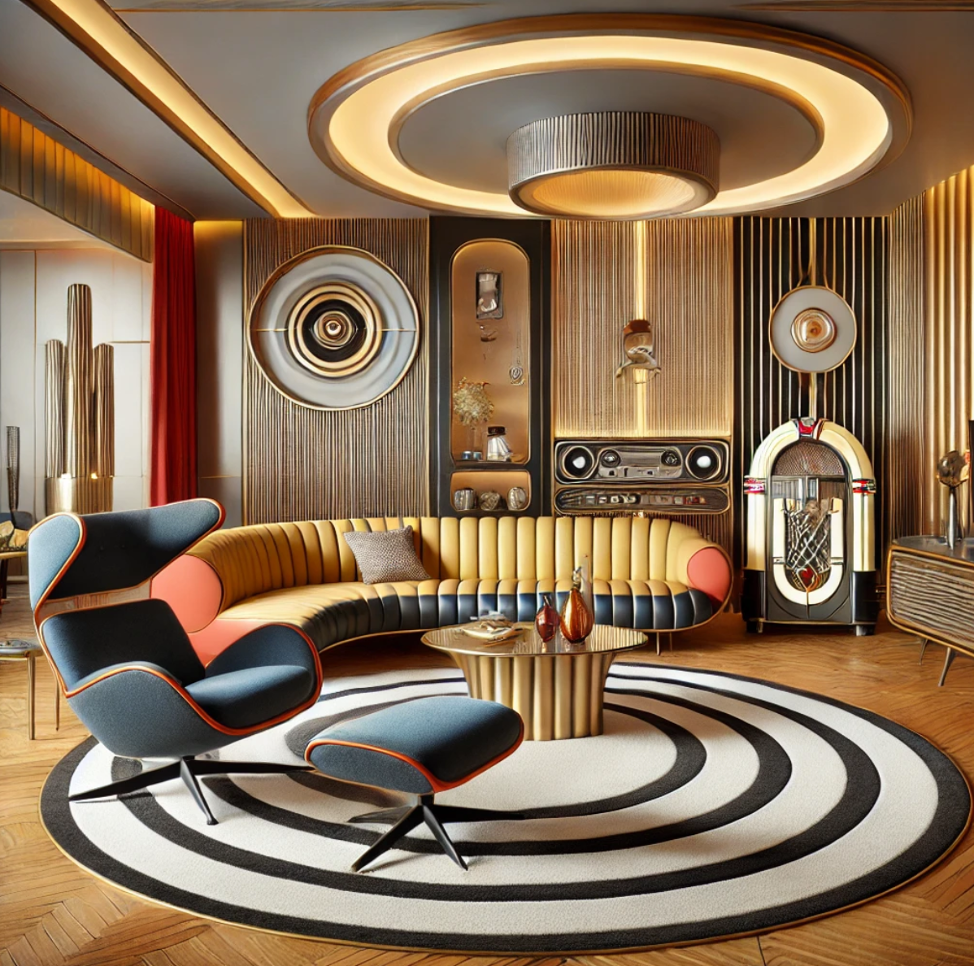
Retro-futurism refers to a design style that draws inspiration from how people in the past envisioned the future. This aesthetic is often associated with the mid-20th century, particularly the 1950s and 1960s, when society was fascinated by space exploration, technological advancements, and the possibilities of the future. Designers and architects of that era imagined sleek, streamlined buildings, futuristic furniture, and bold, abstract art. Today, retro-futurism taps into that vision, blending vintage elements with modern technology to create a timeless yet futuristic aesthetic.
Key characteristics of retro-futurism include:
- Curved, aerodynamic shapes
- Bold color palettes with pops of bright hues like orange, turquoise, and yellow
- Metallic finishes and reflective surfaces
- Space-age motifs and designs
- A mix of old and new technology, creating a balance between nostalgia and modernity
2. The Role of Space Age Aesthetics in Retro-Futurism
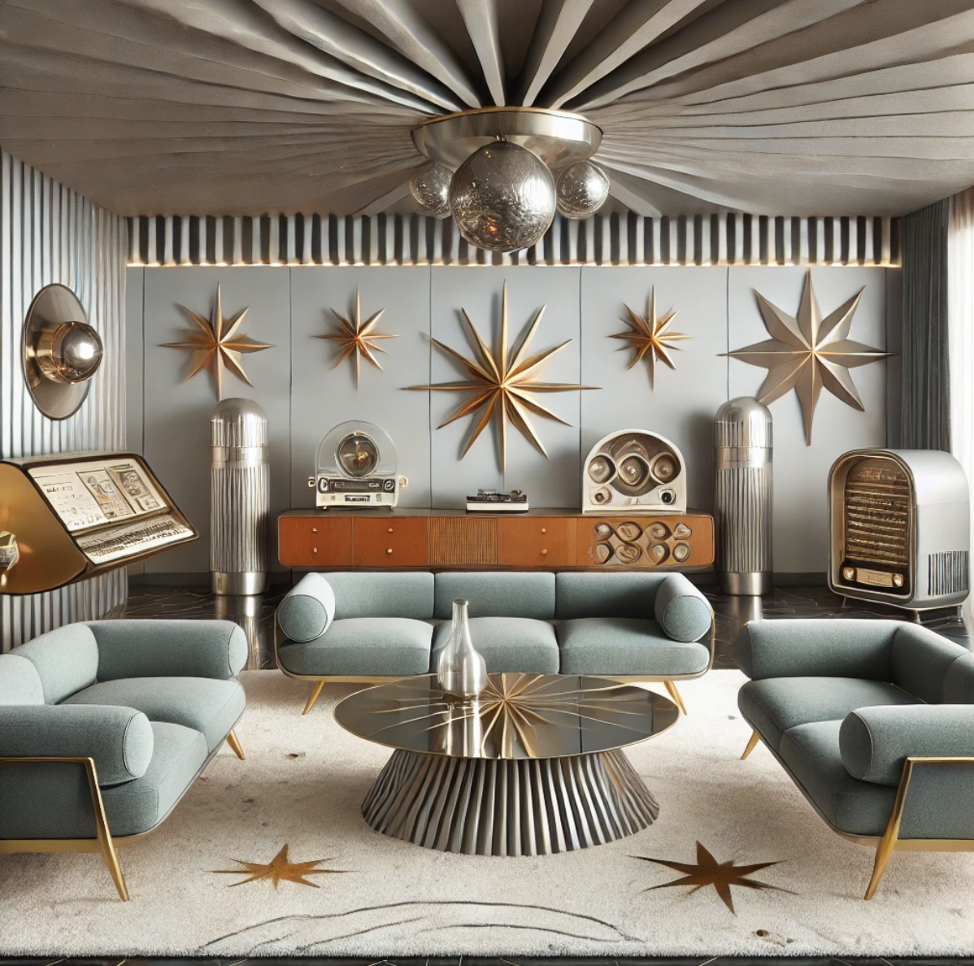
One of the defining features of retro-futurism is its heavy influence from the Space Age, a period marked by intense interest in space travel and exploration. This fascination shaped everything from architecture to household appliances. In 2025, retro-futurism revives this interest by incorporating space-age motifs such as starbursts, planets, rockets, and atomic designs into modern homes.
Pro tip: Look for furniture or décor pieces that have sleek, rounded forms reminiscent of spaceships, or incorporate space-inspired artwork to bring a sense of cosmic wonder to your living space.
3. Blending the Past and Future in Furniture Design
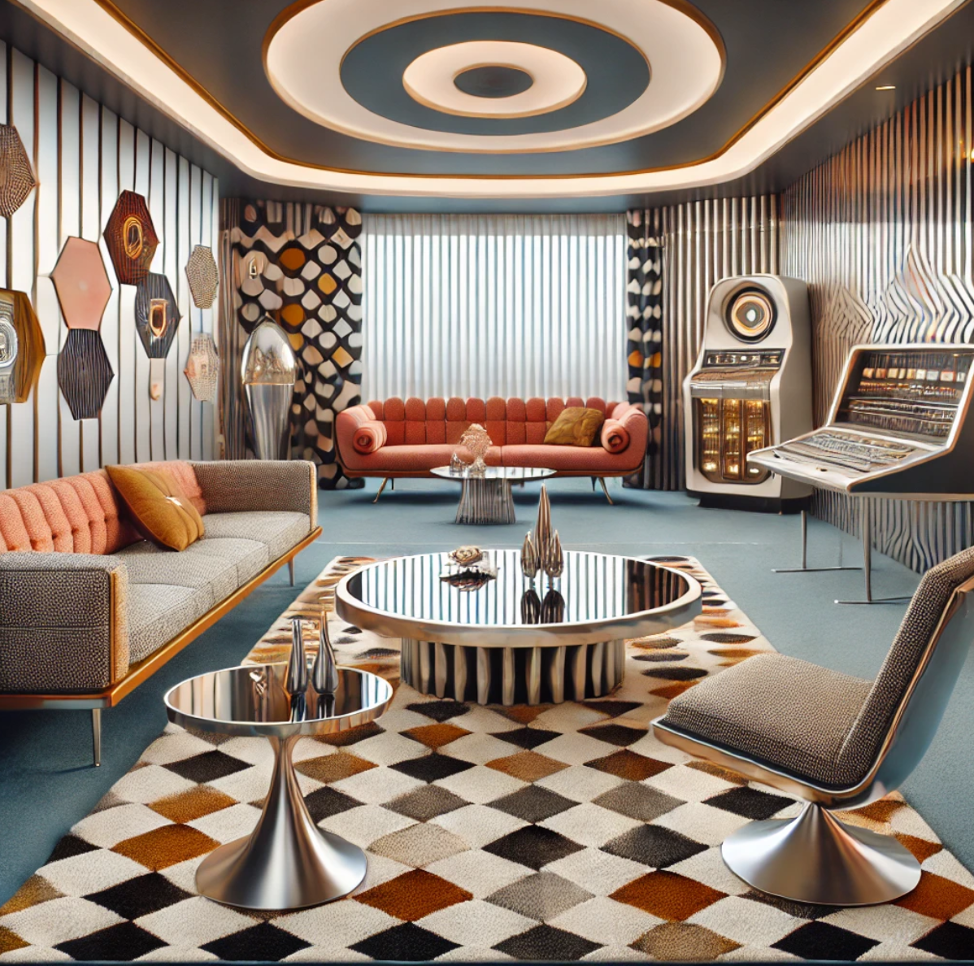
Furniture in retro-futurism often combines the clean, functional lines of mid-century modern design with futuristic shapes and materials. Think low-profile couches with bold, geometric patterns, coffee tables made from chrome and glass, or chairs with molded plastic and bright upholstery.
In 2025, many designers are using cutting-edge materials such as fiberglass, acrylic, and metal to craft pieces that feel both vintage and modern. Furniture with organic, curved lines gives a nod to the past while still maintaining a futuristic appeal.
Pro tip: When selecting furniture, opt for pieces with bold, unique shapes. A chrome-finished coffee table with a glass top or a vintage-inspired armchair with sleek metal legs can instantly add a retro-futuristic vibe to your space.
4. Color Palettes: Mixing Bold with Neutral
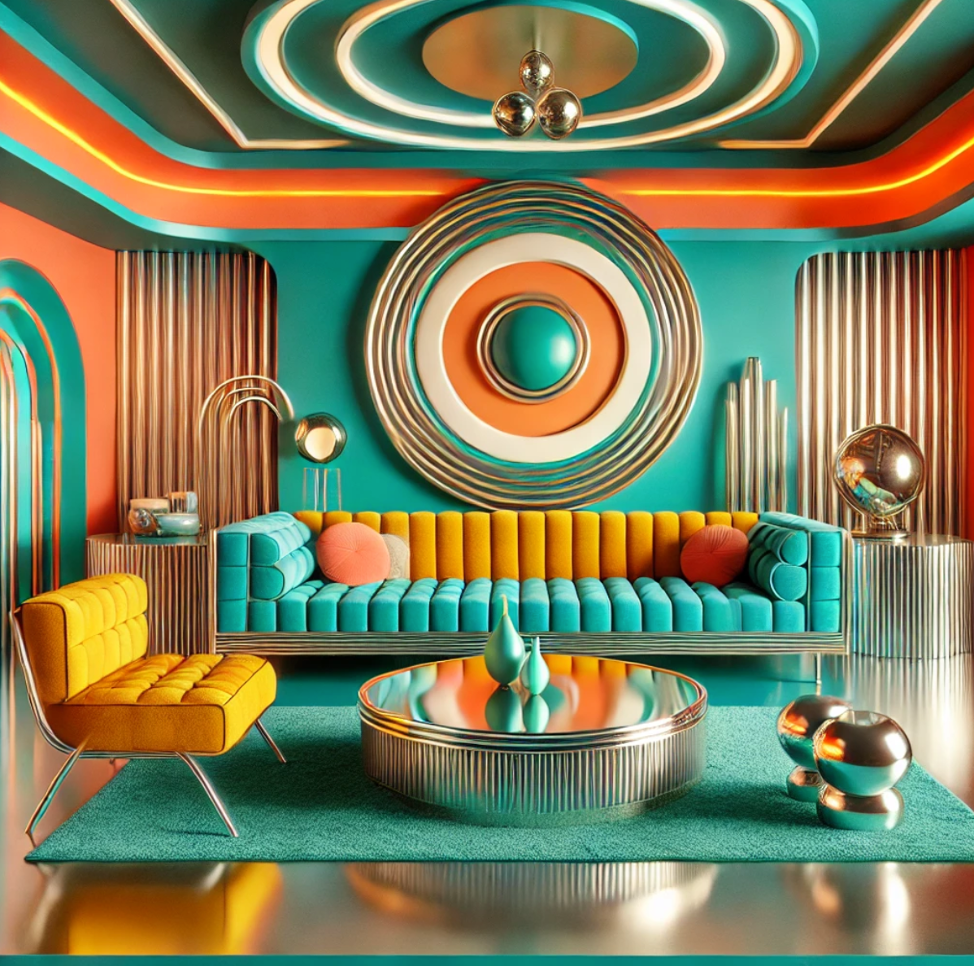
Retro-futurism embraces bold, often unconventional color schemes. In contrast to the more neutral tones popular in recent years, 2025’s take on retro-futurism encourages homeowners to experiment with brighter, bolder hues like teal, mustard yellow, coral, and avocado green. These vibrant colors are typically paired with more muted, metallic tones such as silver, chrome, and gold to create balance.
For a more futuristic look, add metallic accents in your choice of décor. Metallic wallpapers, reflective surfaces, and shiny finishes on furniture all evoke the optimistic spirit of how the past viewed the future.
Pro tip: Incorporate pops of color into your space through accessories like cushions, throw rugs, and wall art. A teal sofa or mustard yellow armchair can serve as the focal point, while silver or chrome accents help balance the palette.
5. Technology and Innovation in Retro-Futuristic Design
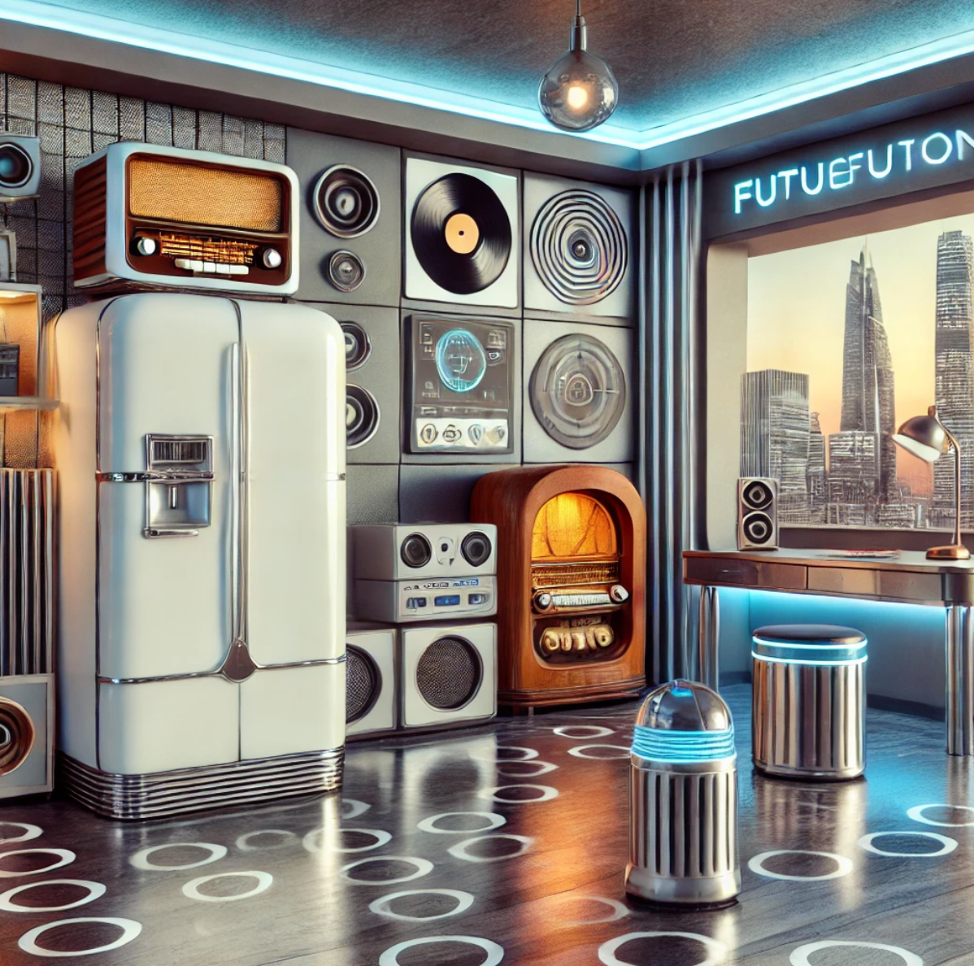
Retro-futurism is not only about aesthetics but also about integrating technology in a way that feels futuristic yet nostalgic. Smart home technology, such as voice-activated lighting, AI-driven thermostats, and wireless speakers, can easily blend with a retro-futuristic space when thoughtfully integrated. However, it’s important that the technology complements the design rather than overpowering it.
One way to blend old and new technology is through appliances or devices that are modern but have a vintage-inspired look. For example, retro-style refrigerators, toasters, and radios with modern functionality can keep the balance between the past’s vision of the future and today’s innovations.
Pro tip: Use modern technology to subtly enhance the retro-futuristic theme. Smart lighting systems with customizable colors can mimic the bold color schemes of the 1950s and 1960s, while smart devices in sleek, minimalist designs can blend seamlessly into the décor.
6. Lighting: A Key Element in Retro-Futurism
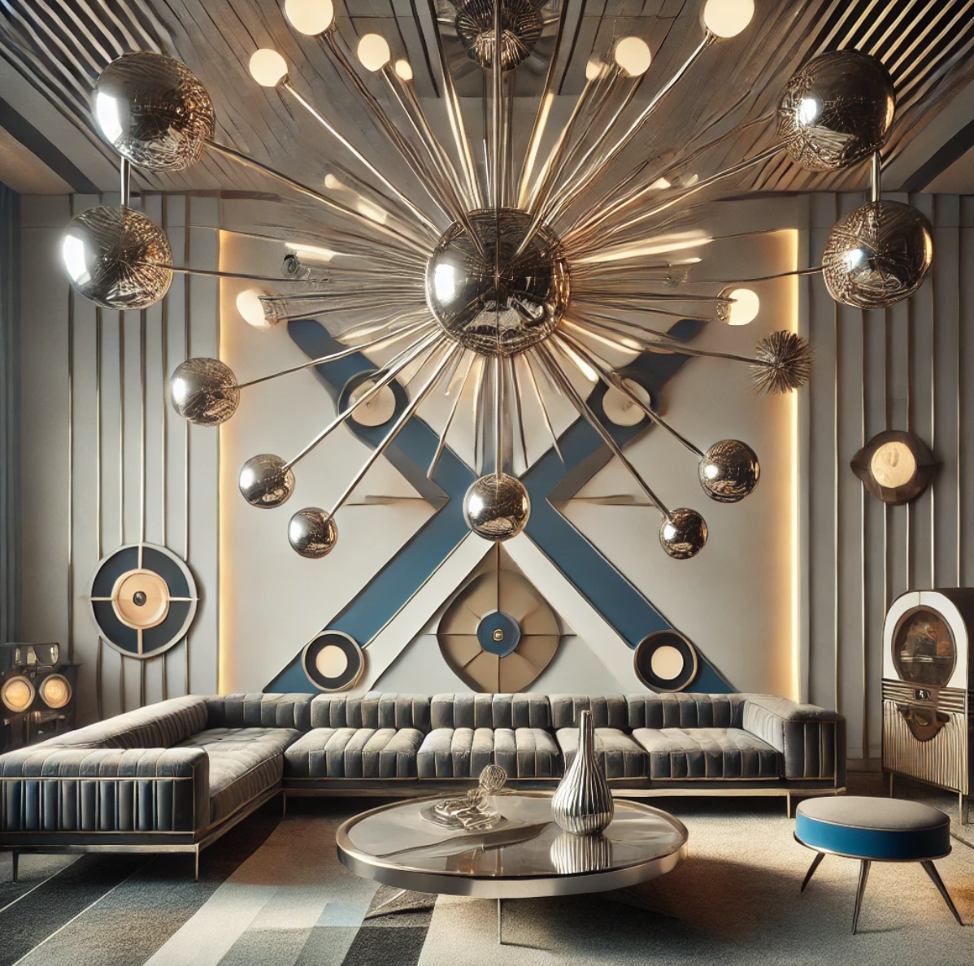
Lighting plays a crucial role in creating a retro-futuristic space. In keeping with the space-age theme, light fixtures often have a sculptural quality, featuring geometric shapes, metallic finishes, and unusual forms. Sputnik chandeliers, which feature starburst patterns of metal arms and globes, are a particularly iconic choice in retro-futurism and are experiencing a major comeback in 2025.
Floor lamps with arched arms and globe shades, as well as pendant lights with chrome finishes, can also create the futuristic ambiance associated with this style. LED lights, used strategically, can add a modern touch, emphasizing the space-age aesthetic while offering energy-efficient lighting options.
Pro tip: To enhance the retro-futuristic feel, choose light fixtures that make a statement. A bold, starburst chandelier or a curved metal floor lamp can instantly elevate the space.
7. Artwork and Décor: Showcasing Futuristic Inspiration
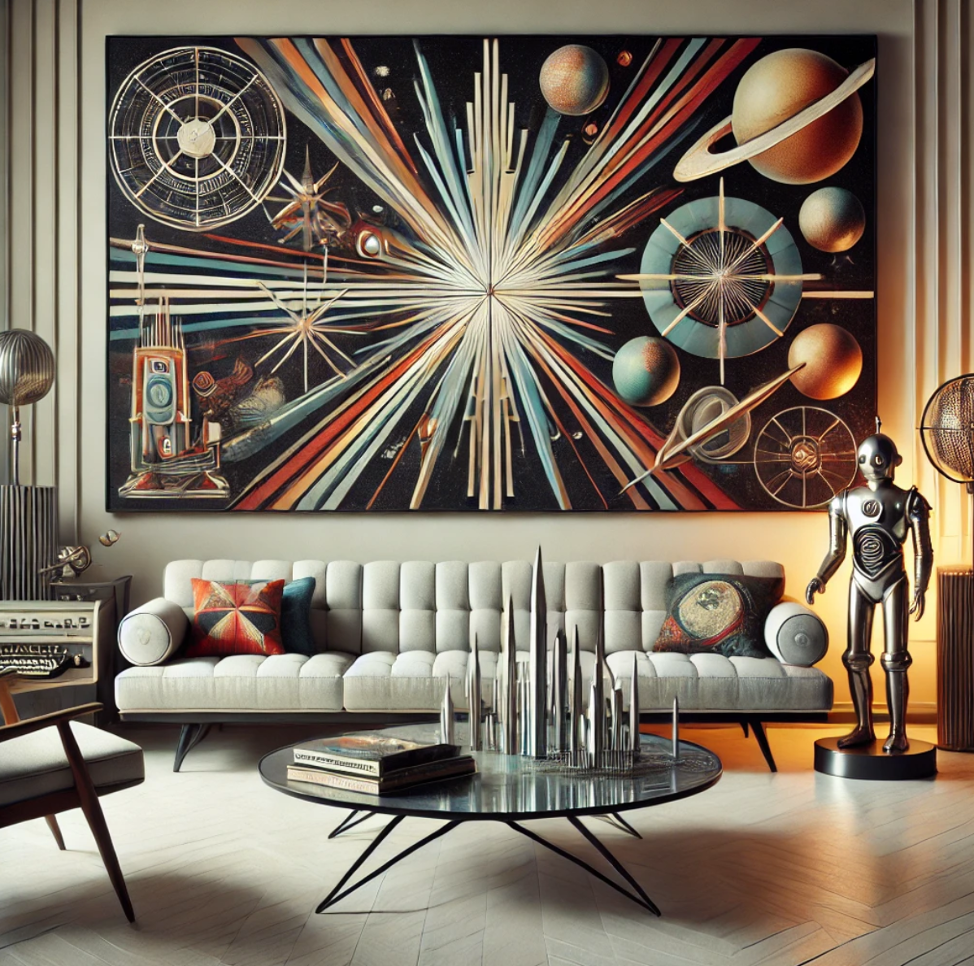
Incorporating retro-futuristic artwork and décor is key to achieving this aesthetic. Popular motifs include starbursts, atomic symbols, space exploration, and abstract geometric designs. These elements often appear in wall art, sculptures, clocks, and even textiles like curtains or rugs.
2025’s take on retro-futurism emphasizes oversized wall art or sculptures as focal points in the room, creating a sense of boldness and excitement. Neon signs, framed prints of futuristic cityscapes, and space-themed artwork can help reinforce the theme.
Pro tip: Display artwork that features retro-futuristic themes like atomic age-inspired graphics or space exploration motifs. These pieces will serve as conversation starters while adding character to the room.
8. Embracing Nostalgia Through Vintage Accessories
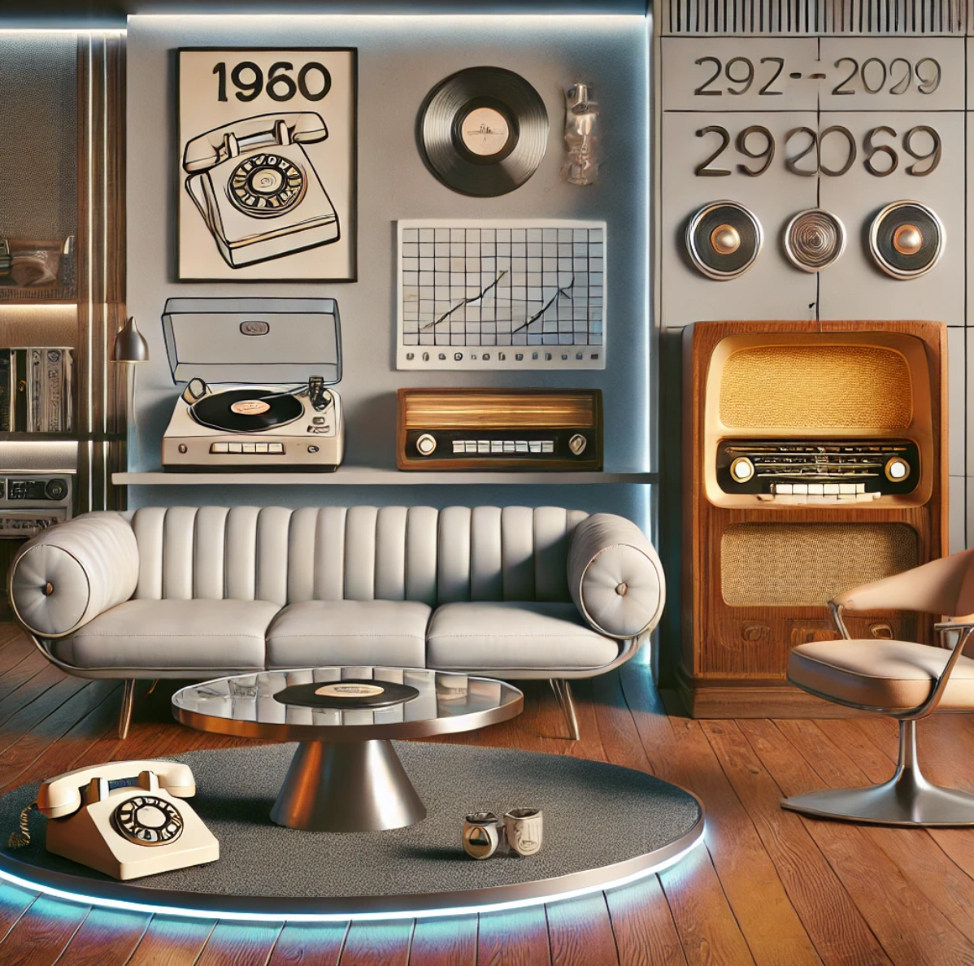
While retro-futurism celebrates forward-thinking design, it also embraces nostalgia. Vintage accessories like rotary phones, record players, and old-fashioned radios can complement the futuristic elements of a room, adding authenticity to the retro aspect of the design. Balancing these accessories with modern counterparts creates a dynamic and engaging space.
Pro tip: Find vintage accessories at flea markets or antique shops to add an authentic retro touch to your futuristic space. A well-placed record player or a vintage rotary phone can bring the past to life while maintaining a futuristic vibe.
9. How to Bring Retro-Futurism Into Your Home
If you’re ready to embrace retro-futurism in your own home, the key is to balance the old and the new. Start with one or two statement pieces, such as a retro-futuristic light fixture or a bold-colored, low-profile sofa. Then, layer in smaller elements like vintage-inspired accessories, modern technology, and futuristic décor.
Experiment with mixing different textures and materials, such as chrome, glass, and fiberglass. Don’t be afraid to incorporate bold colors into your space, but balance them with neutral backgrounds to avoid overwhelming the room. By blending elements of the past and future, you can create a space that feels both nostalgic and forward-looking.
Final Thoughts
Retro-futurism offers a unique opportunity to explore the fascinating tension between the past’s vision of the future and the present’s reality. By incorporating space-age aesthetics, bold color schemes, innovative furniture design, and modern technology, you can create a living space that feels both nostalgic and cutting-edge. Whether you’re a design enthusiast or someone looking to add personality to your home, retro-futurism provides a playful and dynamic approach to modern interior design.

